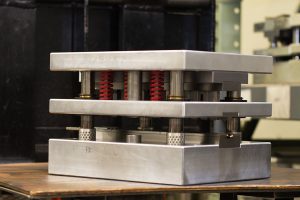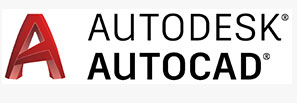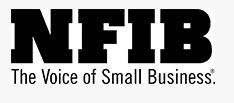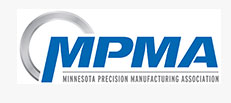 Precision metal stamping is the process of punching markings, three-dimensional shapes, or other designs into material surfaces, and precision stamping machines exert a high level of force to engrave dies and forms onto the material surface. Steel, copper, and aluminum are the most frequently stamped metals, but other metals, plastics, and cement can also be precision-stamped.
Precision metal stamping is the process of punching markings, three-dimensional shapes, or other designs into material surfaces, and precision stamping machines exert a high level of force to engrave dies and forms onto the material surface. Steel, copper, and aluminum are the most frequently stamped metals, but other metals, plastics, and cement can also be precision-stamped.
Precision Stamping Machine Types
Mechanical presses and hydraulic presses are the two primary types of precision stamping machines. Both alternatives offer distinctive features that are suited for specific purposes.
The characteristics of each type of precision metal stamping machine are as follows:
- Mechanical presses: The mechanical press transfers and stores energy via a mechanical flywheel. Depending on the type of press, its punches can range in size from 5 mm to 500 mm. Also variable, mechanical pressing speed typically falls between 20 and 1,500 strokes per minute. These presses are available in sizes ranging from twenty to six thousand tons.
- Hydraulic presses: This type of precision stamping applies material pressure using hydraulics. Hydraulic pistons displace fluid with a force proportional to the piston head’s diameter, enabling a high degree of control. In addition, they have variable stroke and speed capabilities and can typically deliver full power throughout the entire stroke. These presses typically range in size from twenty to ten thousand tons and offer stroke lengths of 10mm to 800mm.
Advantages of Precision Metal Stamping Along with machining, die-casting, forging, and numerous other processes, precision metal stamping is a common and ubiquitous manufacturing technique. Among its principal benefits are:
Precision metal stamping dies are typically less expensive to produce and maintain than dies for other common processes.
- Lower secondary costs: Cleaning and plating precision stamping machines is less expensive than similar treatments for other metal forming techniques.
- High level of automation: Precision metal stamping machines are relatively simple to automate and can utilize high-end computer-control programs that offer greater precision, faster production, and quicker turnaround times.
Applications and Industries for Precision Stamping
Numerous applications make use of precision stamping machines, particularly those involving three-dimensional designs, lettering, or other surface engraving features. Typically, these stamped products are produced for manufacturers of home appliances, automobiles, telecommunications services, aerospace industries, medical equipment manufacturers, and electronics.
Specific products and components can range from simple stampings, such as metal clips, springs, weights, washers, and brackets, to more intricate designs, such as engine bases or friction plates.
Considerations When Purchasing a Precision Metal Stamping Machine
When selecting a precision stamping machine or process, one of the most important factors to consider is the intended production volume. This characteristic can be a deciding factor when making a purchase, as different processes are able to produce different-sized production runs, and some can only operate on a specific type of stamping machine.
There are three principal types of precision stamping processes:
- Soft tooling is typically the least expensive method because it only requires a single stamping machine. However, labor costs per unit make higher-volume production cycles less economical. Soft tooling can typically produce a maximum of 10,000 parts per year.
- Stage tooling: Stage tooling manually transfers precut blanks between two to five presses in order to produce the required product design. This method has lower labor costs than soft tooling, but higher tooling expenses. It can produce a maximum of approximately 20,000 products per year.
- Hard tooling: This is an automated version of the stage tooling procedure that streamlines the multi-step stamping method and increases production rates. Initial tooling costs are high due to the incorporation of computer-control technology, but labor costs are reduced in the long run. Hard tooling is ideal for production runs of over 20,000 units per year.
The type of stamping required for your project is another crucial consideration when purchasing a precision stamping machine. The five most prevalent stamping techniques are:
- Deep drawing is advantageous for applications requiring cavities with recesses. Using blanking, swaging, or sizing, deep drawing deforms the base material and applies recessive features.
- Fine blanking is advantageous for providing high precision and smooth edges. Fine blanking is a one-step process because it utilizes the cold extrusion method.
- Multislide stamping: Multislide methods create complex shapes by pressing a series of different dies simultaneously onto a single workpiece.
- Fourslide stamping: This process is ideal for crafting complex components with multiple bends or twists. Four slidable tools are utilized to shape the workpiece through multiple deformations.
- Wire forming: In wire forming, metal is drawn or extruded through a hole in a die using cold or hot techniques. It is frequently used to fashion springs, clips, rings, and other wire forms.
Selecting the Material for Stamping
Precision stamping techniques can be used to process a variety of fabrication materials, but metals are by far the most common. After stamping, metals typically retain their malleability and ductility. Materials utilized in precision stamping are typically soft to medium in hardness and have a low coefficient of flow.
The following metals and metal types are frequently manufactured by stamping:
- Valuable metals including silver, gold, and platinum
- Ferrous metals, in particular iron-based alloys such as stainless steel • Non-ferrous metals, including bronze, brass, and zinc
- Non-typical alloys including beryllium nickel and beryllium copper





